When we originally started planning The Coffee Collective, Daterra was the first farm we knew we’d buy from. Back in 2005 when Peter and I was training for the barista championship and developing the blend I was going to use, we visited Daterra and had a true Eureka! moment when we cupped the Daterrra Sweet Collection. It was extremely sweet and clean with a mouthfeel that felt perfect for espresso.
So I was very excited to visit Daterra again this year for the first time since then.
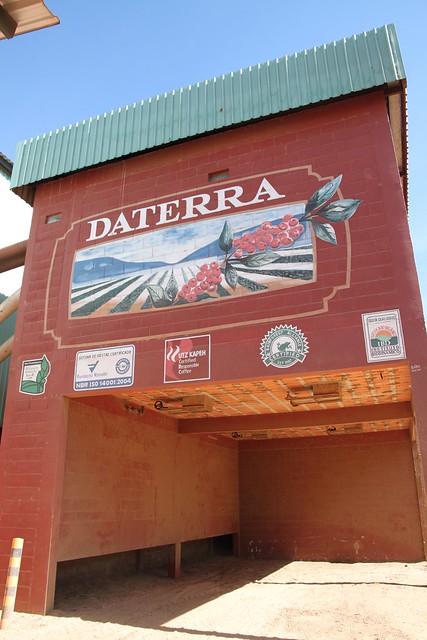
Daterra is located in the Cerrado region. A region you’ll have a hard time finding on a map, since it’s not a political but an ecological region. It’s a very dry area with lots of small Savannah-like vegetation. The farm itself is located around 1100-1200 meters above sea level and measures a whooping 6.000 hectars of land – half of that, though, is actually reservation area, where no coffee is grown. To say Daterra is one farm, is technically incorrect as it is actually made up of three farms: Boa Vista, where the office, the Dry Mill and Quality Control Center is located, Tabuões neighbouring Boa Vista, and finally São João, which is pretty far away in the Sao Paulo state.
There’s about 300 people employed full time year round at Daterra and an additional 150 during the harvest season. I didn’t get to meet them all. But I did get to see Luis Pascoal, the owner and visionary behind Daterra. Luis is an amazing guy whose commitment to sustainable practices and innovation is unsurpassed. He bought the farm 18 years ago and within a decade it was already renowned throughout the specialty coffee world – not the least for it’s research, much of it done together with Illy in Trieste, Italy, specifically on growing and processing coffee for espresso. They were the first farm in the world to vacuum pack coffees in stead of packing in jute sack. Their dry mill have machines that are state-of-the-art and some which Daterra even invented themselves. And to hear Luis speak about politics and environmental challenges almost makes me wish he was a political leader – but then again I’m sure he’s doing plenty good where he is now. Besides the farm Luis is the C.E.O. of Dpaschoal – the largest tire supplier in Brazil. And even in that business he’s committed to environmentally sustainable practices and is right now re-schooling all of his 4.000 employees. Besides that he finds time for a charity fond and even design coffee cups for his roastery Ateliê do Café. The man must never sleep.
Luis and agronomist/farm manager Leo
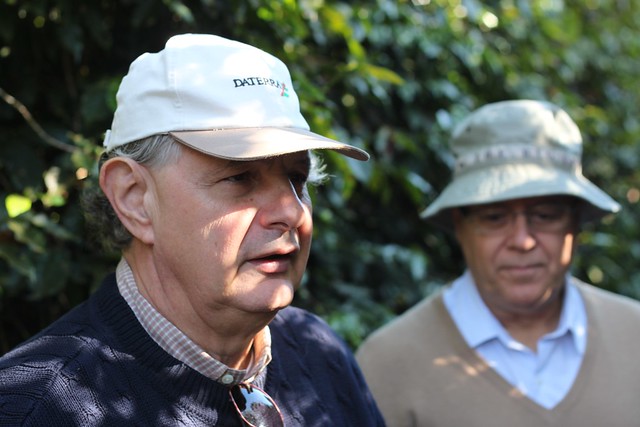
Daterra was the first coffee farm in Brazil to be Rainforest Alliance certified and today have numerous certifications.
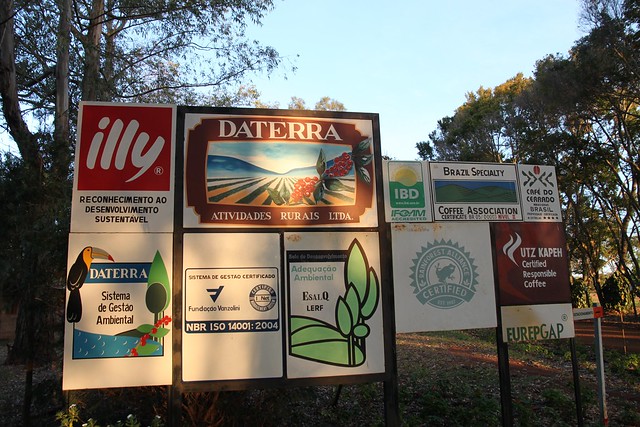
The always lovely Andreza showed me around the farm and in general took great care of me. She’s also the one we talk to about all the logistics and purchases of the coffee. During harvest season and until the coffee has been shipped her calendar must be heavily packed. I’m very grateful for her hospitality!
Carlinhos (“Little Carlos”) is the Quality Control chief and cupper at the farm. He roasts and cups every single microlot before, during and after harvest, constantly monitoring the development. And also he’s a very nice guy! I really enjoyed cupping with him.
Carlinhos and Andreza cupping some TCC coffees
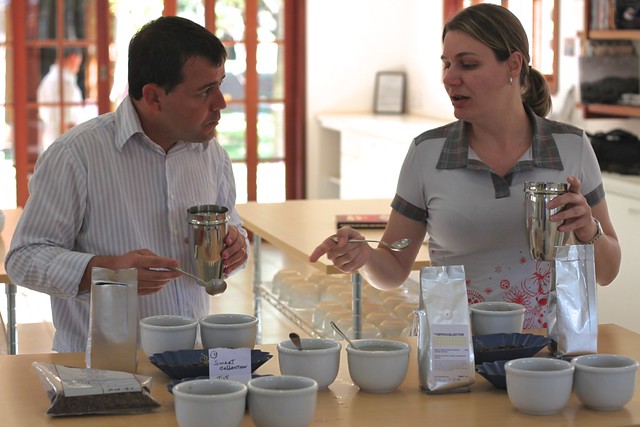
I also met Daterra’s three agonomists. Leopoldo Santana – or just Leo - is really the farm manager and in close cooperation with Carlinhos they’ll determine when to harvest and what to renew on the wet and dry mill. Gustavo is the agronomist responsible for the Boa Vista farm and one of the most knowledgeable and informative guys I’ve ever met. Talking to him about growing, nursing, pruning, maintaining and protecting coffee trees taught me more than any book I’ve read on the subject(s). Sidney was also kind enough to show me around the Tabuões farm and especially the very large wet mill they have there.
Gustavo showing a handful of the late harvest
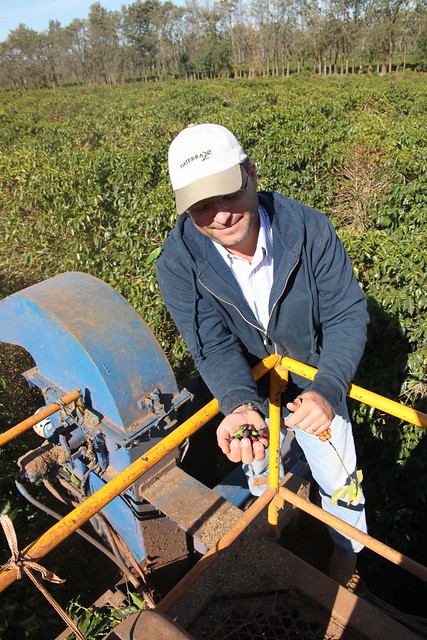
I’m going to divide the account of this trip into three post of which this was the first. And instead of boring you with every little detail about what I did on my trip, I’m going to structure it around what happens on the farm.
Tuesday, August 17, 2010
Daterra 2010 visit part 1
Subscribe to:
Post Comments (Atom)

1 comment:
I enjoyed the article and pictures and it looks like you have a great job! I was wondering if this would be considered a free trade coffee? Also is it organic? I like the combination of the two and I have recently bought an organic free trade through Kaffe Magnum Opus or KMO Coffee that was amazing. It might just be your next testing ground.
Post a Comment